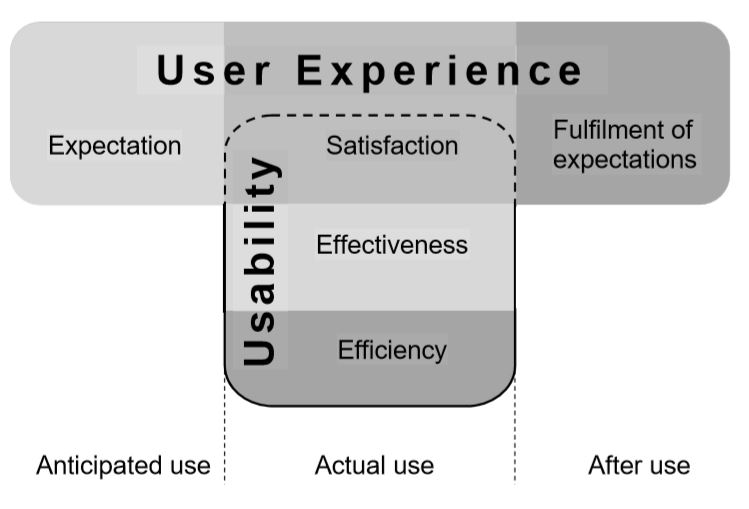The terms user experience & usability
A explanation of the terms and concepts of user experience & usability.
It is important to understand that these two terms are not synonyms and they should be used specificly in the right context. Basically user experience (also named UX) is the whole end-to-end experience which is a consequence of brand image, presentation, functionality, system performance, interactive behaviour, and assistive capabilities of a product. It also takes into account what happens before (expectations) and after (fulfilment of expectations) a product is used. Focusing solely on usability is quite a common mistake.
The following figure shows the relationship between user experience and usability:
Expectations / Anticipated use
Before a user is using a product - he has expectations. These are influenced by:
- Company branding / Marketing
- Customer reviews
- Previous interactions (with other products and services)
- …
Usability / Actual Use
Officially usability is defined as:
The extent to which an interactive system can be used by specified users to achieve specified goals with effectiveness, efficiency and satisfaction in a specified context of use.
This means usability is mainly about the interaction with a product. It is possible with specific techniques (e.g. usability tests) to evaluate and measure the usability aspects. With the results we should continuously (iterative) increase the overall value and UX of a product.
Fulfilment of expectations / After Use
After a product is used we automatically think about our expectations that we had. Did we got what we expected? When yes, we are normally positive about the product and had a good user experienece. This could be influenced by:
- Product delivery
- Post-sales support
- Recent interactions (e.g. product support)
- …
Hopefully this helps to understand the relationship between the terms user experience and usability. Please let me know if there are any errors or you have a questions.
